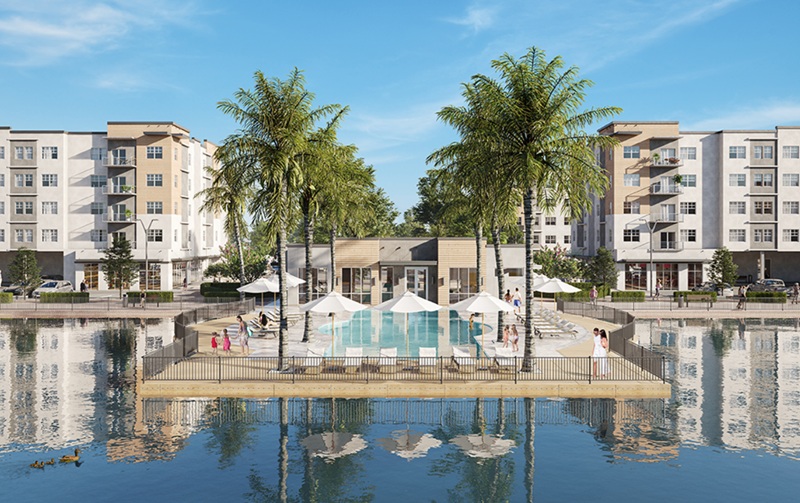Over the past three decades, the United States has maintained one of the world’s most respected and stable residency-by-investment programs: the EB-5 Immigrant Investor Program. Initially launched in 1990 to attract foreign capital and stimulate job creation, the program has evolved into a key pathway for global investors seeking U.S. permanent residency and, ultimately, citizenship in the world’s largest economy.

Following several reforms and modernizations, including the EB-5 Reform and Integrity Act of 2022, the program now offers a more transparent and secure framework for investors. With a minimum qualifying investment of $800,000 in Targeted Employment Areas (TEAs) or $1,050,000 elsewhere, the EB-5 Visa provides a direct route to permanent residency for applicants and their families, along with the opportunity to become U.S. citizens after five years.
In this complete guide, we’ll explore the benefits, eligibility requirements, investment routes, costs, and step-by-step application process of the EB-5 Visa in 2025, helping investors understand how to secure U.S. residency and build a global future through strategic investment.
Key Aspects of the EB-5 Immigrant Investor Program
- The EB-5 program grants conditional permanent residency to the investor, their spouse, and unmarried children under 21.
- Minimum investment: USD $800,000 in a Targeted Employment Area (TEA) or USD $1,050,000 outside a TEA, in a new commercial enterprise or a USCIS-approved Regional Center project.
- The investment must create or preserve at least 10 full-time jobs for qualified U.S. workers.
- Investors may apply for U.S. citizenship after maintaining permanent residency for at least five years.
- The full process to obtain the conditional Green Card typically takes between 12 and 24 months, depending on the investor’s country of origin and visa availability.
What to Discover in This Guide
- What is the EB-5 Immigrant Investor Program?
- Benefits of the EB-5 Visa
- Eligibility Criteria for EB-5 Investors
- EB-5 Visa Requirements
- Step-by-Step EB-5 Application Process
- EB-5 Visa Costs and Fees
- Timeline and Processing Times
- EB-5 Projects Connected to Florida Real Estate
- Comparison: EB-5 vs. Other Investor Visas (2025)
- Frequently Asked Questions about EB-5
- Interested in Applying for the EB-5 Visa? We Can Help.
What Is the EB-5 Immigrant Investor Program?
The Program was created in 1990 by the U.S. Congress to stimulate the U.S. economy through foreign investment and job creation. It is administered by USCIS (United States Citizenship and Immigration Services).
Under the program, foreign investors can qualify for a U.S. Green Card by investing in a commercial enterprise that creates or preserves at least 10 full-time jobs for U.S. workers.
There are two main investment pathways:
- Direct Investment – The investor invests directly in their own business or project, assuming full management responsibility and proving direct job creation.
- Regional Center Investment – The investor participates in a USCIS-approved project managed by a Regional Center. This is the most popular EB-5 route, as it does not require the investor to manage the enterprise directly and allows indirect job creation, making the process significantly more flexible.
Why the Regional Center Investment Is the Most Popular EB-5 Pathway
The Regional Center option dominates the EB-5 market because it offers greater convenience and reduced operational burden. Investors are not required to live in the U.S. or actively manage a business, which makes it particularly attractive to those seeking permanent residency without becoming entrepreneurs.
In addition, job creation under Regional Center projects can include direct, indirect, and induced employment, making it easier to meet the 10-job requirement. Many of these projects are large-scale developments — such as hotels, mixed-use complexes, or infrastructure works — backed by professional management teams and economic impact studies.
Before the temporary suspension of the program in 2021, more than 90% of all EB-5 applications were filed through Regional Centers, according to USCIS data. After the EB-5 Reform and Integrity Act of 2022 reauthorized the program, this route remains the preferred choice for global investors.
There are currently around 600 approved Regional Centers across the United States, according to USCIS. You can view the complete list of approved centers directly on the official USCIS website.
Benefits of the EB-5 Visa
The EB-5 Immigrant Investor Program offers one of the most comprehensive residency-by-investment opportunities in the world. Beyond obtaining a U.S. Green Card, investors and their families gain access to a wide range of economic, educational, and lifestyle advantages that make the program a cornerstone of global mobility and wealth diversification.
Benefits for the investor and family
- Permanent residency (Green Card): Successful applicants and their immediate family members (spouse and unmarried children under 21) receive permanent resident status in the United States, granting them the same rights to live, study, and work as U.S. citizens.
- Freedom to live and work anywhere in the U.S.: Investors are not tied to a specific location or employer. Once permanent residency is granted, they can reside in any state and pursue any professional or business activity.
- Direct path to U.S. citizenship: After maintaining permanent residency for five years, EB-5 holders become eligible to apply for American citizenship, opening access to one of the world’s strongest passports.
- Work and travel authorization: While waiting for their Green Card approval, investors and their dependents can obtain temporary work permits (Employment Authorization Documents) and advance parole, allowing them to work and travel internationally without restrictions.
- Educational and economic benefits
- Access to top-tier education: Children of EB-5 investors can enroll in U.S. public schools and may qualify for reduced in-state tuition at public universities, significantly lowering higher education costs.
- Eligibility for financial aid: Green Card holders may apply for student loans, scholarships, and grants — opportunities that are often unavailable to international students.
- Participation in the world’s largest economy: The Program allows investors to own and operate businesses, access the U.S. banking system, and participate freely in financial markets, enhancing their global investment portfolio.
- No employer sponsorship required: Unlike other employment-based visas, the EB-5 program does not depend on a job offer or employer sponsorship. Investors have full autonomy over their residency and professional path.
Eligibility Criteria for EB-5 Investors
To qualify for the EB-5 Visa, applicants must:
- Be at least 18 years old
- Be a non-U.S. citizen with no criminal record
- Invest $800,000 in a Targeted Employment Area (TEA) or $1,050,000 in a non-TEA project
- Prove the lawful source of funds used for the investment
- Create or preserve 10 full-time jobs for qualifying U.S. workers
- Participate in the management or policy formation of the enterprise
Eligible family members include the spouse and unmarried children under 21.
EB-5 Visa Requirements
Applicants must submit comprehensive documentation to prove their eligibility and the lawful origin of their investment funds. Common documents include:
- Valid passport and personal identification
- Civil certificates (birth, marriage, etc.)
- Police clearance certificates from all countries of residence
- Financial statements or tax returns showing legal income
- Proof of investment transfer
- Evidence of business ownership (if applicable)
- Source-of-funds reports by licensed auditors
- Form I-526E (for Regional Center investors)
- Anti-Money Laundering (AML) and Politically Exposed Person (PEP) declarations
Step-by-Step EB-5 Application Process
Applying for the Visa involves several legal and procedural steps that must be carefully followed to ensure a successful outcome. Because the process requires detailed documentation, strict compliance with USCIS regulations, and coordination with approved projects or Regional Centers, it is highly recommended to work with an immigration law firm specialized in the EB-5 Program. An experienced legal team will guide you through every phase, from selecting the right investment vehicle to obtaining your permanent Green Card.
1. Choose a Qualified EB-5 Project
The first step is selecting a project that meets USCIS requirements. Investors can choose between a Direct Investment, where they actively manage or own a business, or a Regional Center Investment, which is the most common path and allows for a passive role. Proper due diligence is essential: review the project’s financials, job creation projections, and the track record of both the developers and the Regional Center managing it.
2. File Form I-526E (Immigrant Petition by Regional Center Investor)
Once the investment is made, your attorney will file Form I-526E with USCIS to demonstrate that your funds came from a lawful source and were properly invested in a qualifying U.S. enterprise. Supporting documentation typically includes bank statements, tax returns, business records, and proof of the investment transfer.
3. Wait for USCIS Review
After submission, USCIS will review your petition to verify compliance with the requirements. Processing times can vary based on workload and case complexity. If approved, you will be eligible to apply for conditional permanent residency, either through adjustment of status (if you are in the U.S.) or via consular processing in your home country.
4. Obtain the Conditional Green Card
Upon approval, you and your qualifying family members (spouse and unmarried children under 21) will receive a two-year conditional Green Card. This status allows you to live, work, and study anywhere in the United States while your investment continues to create jobs as required by the program.
5. Remove Conditions (Form I-829)
Within the 90 days before your conditional Green Card expires, you must file Form I-829 to remove the conditions on your residency. At this stage, you must demonstrate that your investment was maintained and that it successfully created at least ten full-time jobs for U.S. workers. Once approved, you and your family will obtain permanent Green Cards.
6. Apply for U.S. Citizenship (Optional)
After holding permanent residency for five years, EB-5 investors become eligible to apply for U.S. citizenship through naturalization. This step is optional but provides access to one of the world’s most powerful passports, granting visa-free or visa-on-arrival access to more than 180 countries.
EB-5 Visa Costs and Fees
| Category | Amount (Approx.) |
|---|---|
| Minimum Investment (TEA) | $800,000 |
| Minimum Investment (Non-TEA) | $1,050,000 |
| USCIS Filing Fees (I-526E) | $11,160 |
| I-829 Petition Fee | $9,525 |
| Legal & Administrative Fees | $50,000 – $80,000 |
| Total Estimated Cost | $900,000 – $1.15M |
Timeline and Processing Times
The overall timeline for obtaining an Green Card varies by country of origin and USCIS workload but typically follows this schedule:
- I-526E Approval: 24–36 months
- Conditional Green Card Validity: 2 years
- I-829 Approval (Permanent Residency): 2–3 years after I-526E approval
- Citizenship Eligibility: After 5 years as a Green Card holder
EB-5 Projects Connected to Florida’s Real Estate Market
While the direct purchase of a property does not qualify as an EB-5 investment, many real estate developments in Florida are structured through Regional Centers that make participation possible within the program’s legal framework. These projects — often large mixed-use or residential developments — are designed to meet the requirements for job creation and capital investment, allowing investors to benefit both from real estate appreciation and from the path to U.S. permanent residency.
In practice, developers and specialized legal teams structure these investments so that the capital contributed by EB-5 participants is directed toward qualified portions of the project, such as construction financing or job-generating activities. This approach has made Florida, particularly cities like Miami and Orlando, one of the most dynamic markets for EB-5-related real estate. For investors seeking tangible assets combined with immigration benefits, these projects represent one of the most secure and attractive routes available under the current U.S. residency-by-investment framework.
Learn more about Millenia Park in Orlando, a real estate project structured under the EB-5 investment program.

Comparison: EB-5 vs. Other Investor Visas (2025)
| Feature | USA (EB-5) | Portugal (Golden Visa) | Greece (Golden Visa) | Spain (Golden Visa) |
|---|---|---|---|---|
| Minimum Investment | $800,000 | €500,000 (funds) | €250,000 (real estate) | €500,000 (real estate) |
| Residency Requirement | None | 7 days/year | None | None |
| Citizenship Timeline | 5 years | 5 years | 7 years | 10 years |
| Family Inclusion | Yes | Yes | Yes | Yes |
| Permanent Residency | Yes | Yes | Yes | Yes |
FAQs on the Program
Can I include my family in my EB-5 application?
Yes. Your spouse and unmarried children under 21 can be included and will receive Green Cards as dependents.
How long does it take to get an EB-5 Green Card?
Typically between 24 to 36 months, depending on your nationality and project type.
Can I live anywhere in the U.S.?
Yes. Investors can live and work in any U.S. state, regardless of where the investment project is located.
Do I get my investment back?
In most Regional Center projects, capital is returned after the required holding period (usually 5–7 years), subject to project performance.
Interested in Applying for the EB-5 Visa? We Can Help!
The EB-5 Immigrant Investor Program remains one of the most strategic pathways for foreign investors seeking U.S. residency through investment.
InvestingAbroad.net is a global real estate and investment website that provides news, analysis, and insights into international property markets and related programs such as the EB-5 Visa. Backed by CAP International — a real estate consultancy specialized in premium properties in the U.S. and Europe — our team follows the evolution of these investment programs closely. If you would like to learn more about projects connected to the EB-5 or explore opportunities in Florida’s luxury real estate market, contact us today for more information: +351 91 252 9601 (Carlos Barros).
